リチウム電池のメンテナンスと使用に関するガイド - 最新

リチウム電池は私たちの日常生活のいたるところに存在しています。スマートフォンから電気自動車まで、これらの高性能エネルギー貯蔵装置は現代の技術の基盤となっています。リチウム電池はいたるところに存在していますが、リチウム電池の適切な使用方法やメンテナンス方法を知らない人が多くいます。この知識不足は、電池寿命の短縮、安全上の危険、環境へのダメージにつながる可能性があります。
したがって、この記事では包括的な 最高のリチウム電池ガイド メンテナンスと使用方法。このガイドでは、 リチウム電池リチウム電池の種類と用途、効果的なメンテナンスのヒント、新しい電池を初めて正しく充電する方法、使用中の安全上の注意事項、リサイクル方法、推奨されるブランド/製品について説明します。
この記事で概説したガイドラインに従うことで、ユーザーは自分自身と周囲の環境へのリスクを最小限に抑えながら、リチウム電池が最適に機能することを保証できます。
重要なポイント
- リチウム電池の寿命を最大限に延ばすには、適切なメンテナンスと使用が重要です。
- リチウム電池を取り扱う際や保管する際には、常に安全上の注意事項に従う必要があります。
- 充電および保管方法は、使用するリチウム電池の種類に応じて慎重に選択する必要があります。
- 定期的なテストとトラブルシューティングは、漏れを防ぎ、バッテリーがフル容量で機能することを保証するのに役立ちます。
リチウム電池を理解する: 基礎
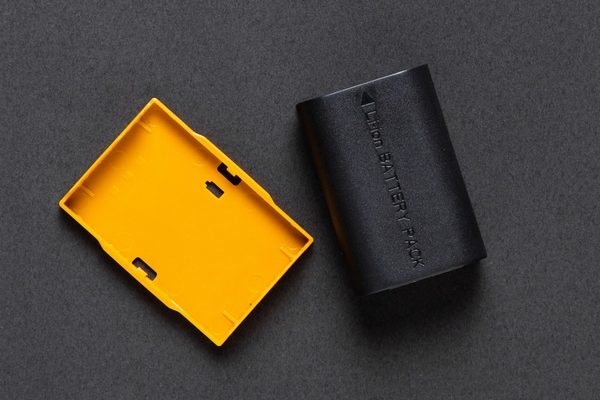
アン リチウム電池の基礎を理解する 最適なパフォーマンスを維持し、寿命を延ばすために不可欠です。
リチウム 電池はリチウムイオンを使用する充電式電源である。 電荷を発生させます。エネルギー密度が高く、小さなスペースに大量の電力を蓄えることができるため、ノートパソコン、スマートフォン、タブレットなどのポータブル電子機器によく使用されます。
リチウム バッテリーの性能を最高の状態に保つには、基本的なお手入れのガイドラインに従うことが重要です。バッテリーは室温またはそれよりわずかに低い温度で保管するのが最適です。高温はバッテリーに損傷を与え、全体的な寿命を縮める可能性があります。また、バッテリーを極端に低い温度や湿気にさらさないようにしてください。
リチウム バッテリーの充電に関しては、覚えておくべき重要なヒントがいくつかあります。まず、デバイスに付属の充電器、またはメーカー認定の交換品を常に使用してください。非ブランド充電器を使用すると、バッテリーが損傷し、安全上のリスクが生じる可能性があります。バッテリーを過充電または過少充電しないことも重要です。最適なパフォーマンスを得るには、20% から 80% の間で充電するようにしてください。
保管と充電に関するこれらの簡単なヒントに従うことで、リチウム電池の寿命を大幅に延ばすことができます。
リチウム電池の種類と用途
さまざまなタイプの リチウム電池の独特な用途と利点を理解するには、それが重要です。.
最も一般的なタイプのリチウム電池はリチウムイオン (Li-ion) 電池で、エネルギー密度が高く寿命が長いため、スマートフォンやノートパソコンなどのポータブル電子機器でよく使用されています。

リチウム電池のもう 1 つのタイプはリチウムポリマー (LiPo) 電池です。これはリチウムイオン電池に比べてエネルギー密度は低いですが、形状やサイズの点で柔軟性が高いため、ウェアラブル テクノロジーでよく使用されます。
適切なメンテナンスと使用に関しては リチウム電池ユーザーが従うべきベストプラクティスがいくつかあります。
まず、リチウム電池は室温で保管し、極端な温度や湿度にさらさないようにすることが重要です。
さらに、バッテリーの寿命が大幅に短くなる可能性があるため、過充電やバッテリーの完全放電は避ける必要があります。
バッテリー容量が 20% を下回る前に充電することをお勧めします。
最後に、バッテリーの物理的状態を定期的に検査することで、潜在的な問題を早期に特定することができます。
膨張や変色などの兆候は、バッテリーの内部コンポーネントに問題があることを示している可能性があり、すぐに交換する必要があります。
これらの手入れと使用に関するガイドラインに従うことで、ユーザーはリチウム電池が長期間にわたって機能し、安全であり、寿命全体にわたって最適なパフォーマンスを維持できることを保証できます。
リチウム電池のメンテナンスのヒント
このサブトピックでは、リチウム電池を保守するためのベストプラクティスに焦点を当てます。
最適なパフォーマンスを確保するには、バッテリーを正しく充電し、使用していないときは適切に保管することが重要です。
さらに、損傷や事故を防ぐために、操作および輸送上の予防措置を講じる必要があります。
これらのガイドラインに従うことで、リチウム電池の寿命が延び、全体的な効率が向上します。
リチウム電池を正しく充電する
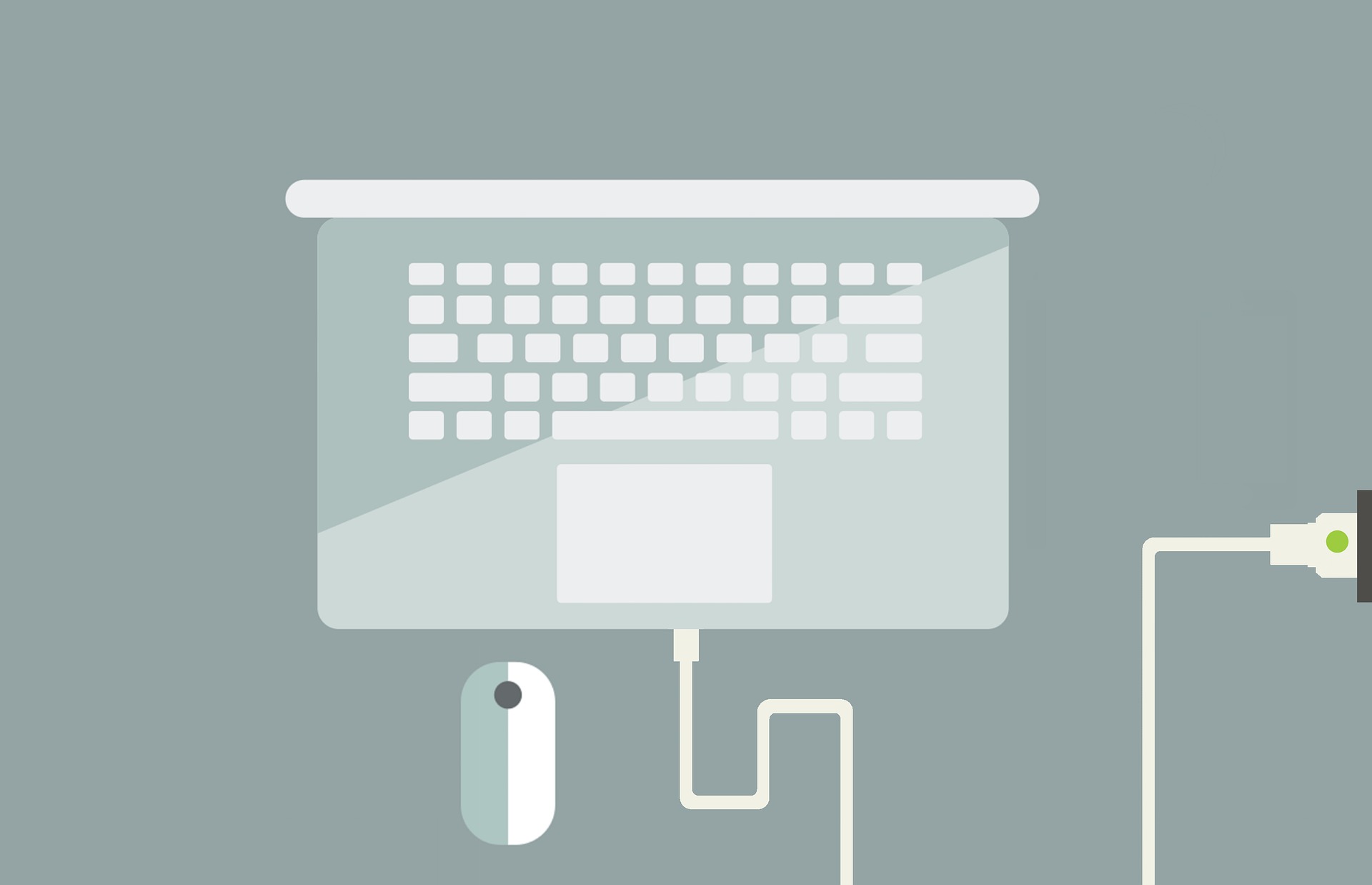
適切な充電技術は、パフォーマンスを最大限に高めるために重要であり、 リチウム電池の寿命リチウム電池のケアで最も重要なことの一つは、 バッテリーを正しく充電する方法.
リチウム電池は、その種類の電池用に特別に設計された専用充電器を使用して充電する必要があります。 リチウム電池メーカー 推奨される充電手順に従ってください。
リチウム電池を保管するときは、直射日光や極端な温度を避け、涼しく乾燥した場所に保管することが重要です。また、過充電は電池の寿命と性能を大幅に低下させる可能性があるため、充電中は電池を監視することも重要です。
さらに、リチウム電池を過度に放電すると、時間の経過とともに損傷したり、容量が減少したりする可能性があります。リチウム電池でパフォーマンスの低下や安全性の懸念などの問題が発生した場合は、電池全体を交換する必要があるかもしれません。
適切な保管および充電方法に従うことで、最適なパフォーマンス レベルを維持しながら、リチウム電池をできるだけ長く使用できるようになります。
リチウム電池を適切に保管する
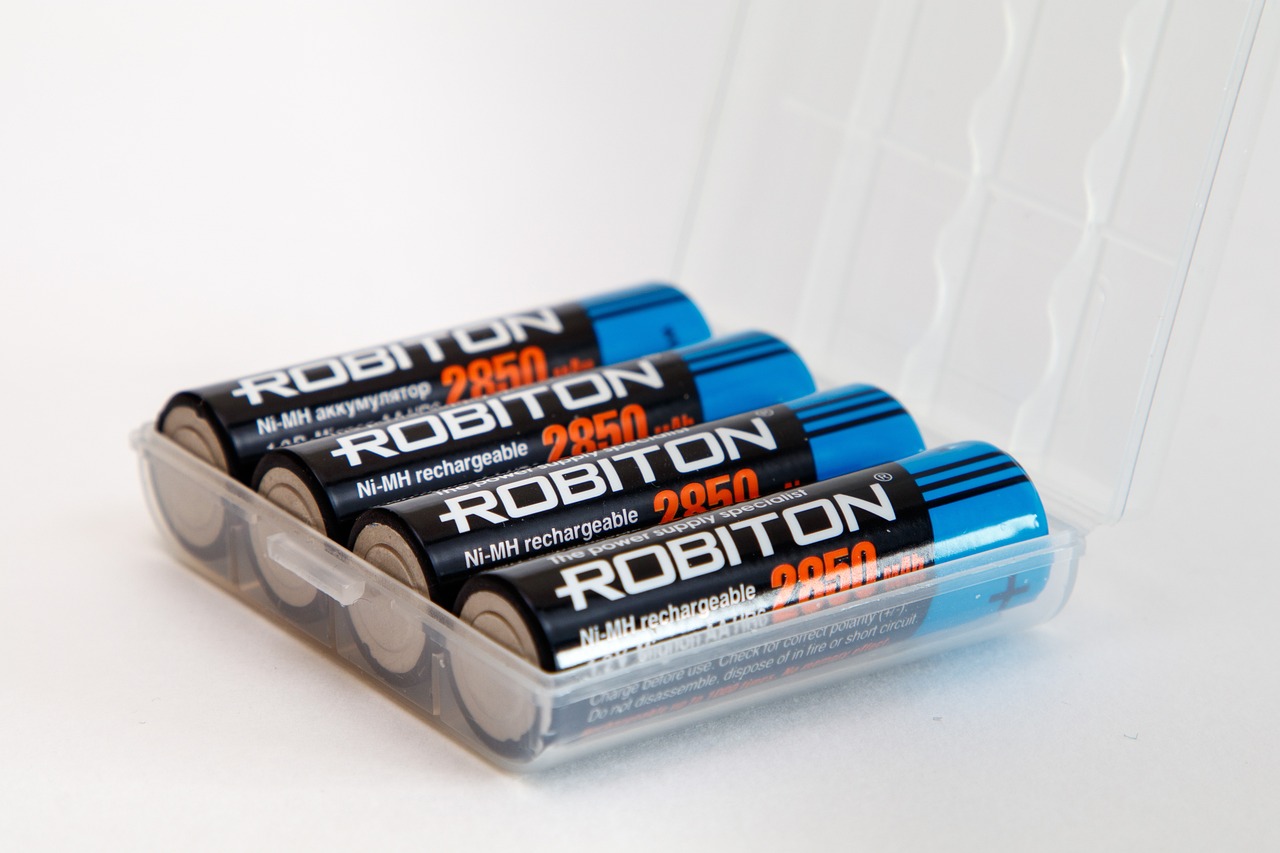
リチウム電池を安全かつ確実に保管することは、その安定性を維持するために重要です。不適切な保管は、性能の低下、寿命の短縮、さらには安全上の危険につながる可能性があります。適切な保管のためのガイドラインを以下に示します。 リチウム電池ストレージ:
まず、 バッテリーは約50%容量まで充電されます 保管する前に必ず充電してください。こうすることで、保管中に過放電してバッテリーが損傷するのを防ぐことができます。
次に、バッテリーを直射日光や熱源から離れた涼しく乾燥した場所に保管してください。高温になるとバッテリーの内部部品の劣化が早まり、寿命が短くなることがあります。
さらに、バッテリーを極寒にさらさないようにしてください。これもバッテリーの性能に悪影響を与える可能性があります。
最後に、リチウム電池を保管または輸送する際には、適切な梱包を行ってください。これにより、安全上の問題や交換が必要になる可能性のある物理的な損傷を防ぐことができます。
ちゃんとした リチウム電池のケアには正しい保管が含まれる 常に安全性を確保しながら、安定性を維持し、寿命を延ばすのに役立つプラクティス。これらのガイドラインに従うことで、投資を保護するだけでなく、最も必要なときにいつでも最適なパフォーマンスを確保できます。
操作上の注意

リチウム電池を安全かつ効率的に動作させるには、特定の注意事項を守る必要があります。これらの注意事項には、リチウム電池の適切な手入れ、保管、充電、安全性、監視が含まれます。
まず第一に、リチウム電池は適切に取り扱わないと怪我や損傷を引き起こす可能性があるため、慎重に取り扱うことが重要です。電池を取り扱うときは、常に手袋やゴーグルなどの保護具を使用してください。また、電池を極端な温度や湿気にさらさないでください。セルが損傷し、性能に影響を及ぼす可能性があります。
第二に、リチウム電池の寿命を延ばすには、適切な保管が重要です。直射日光やラジエーター、ストーブなどの熱源から離れた涼しく乾燥した場所に電池を保管してください。また、ショートを防ぐために、電池を他の金属物から離して保管してください。
また、保管期間中に過充電や完全放電が発生して永久的な損傷につながるのを防ぐために、バッテリーの充電状態を監視することも重要です。全体として、これらの推奨される方法に従うことで、常に安全性を確保しながらリチウム バッテリーの効率を最大限に引き出すことができます。
輸送上の注意事項
リチウム電池を安全に輸送するには、潜在的な危険を避けるために国際機関が定めた規制とガイドラインを厳守する必要があります。輸送中に不適切な取り扱いをすると、火災や爆発などの安全上の問題が発生する可能性があります。
リチウム電池の保管は、これらの電池を安全に輸送するために非常に重要です。損傷を防ぐために、室温で保管し、湿気や極端な温度にさらさないようにすることが重要です。
さらに、取り扱い時には特定の輸送上の注意事項に従うことが重要です。 リチウム電池たとえば、国際規制に従って適切に梱包およびラベル付けする必要があります。また、梱包は輸送中の損傷に対して適切な保護を提供する必要があります。
さらに、リチウム電池が入った箱を積み重ねないようにすることが重要です。積み重ねると、ショートや最悪の場合、物理的な損傷を引き起こす可能性があります。 火災の危険リチウム電池の適切な取り扱い手順に従うことで、輸送中の事故のリスクを最小限に抑えながら電池の寿命を延ばすことができます。
リチウム電池を初めて充電するにはどうすればいいですか?
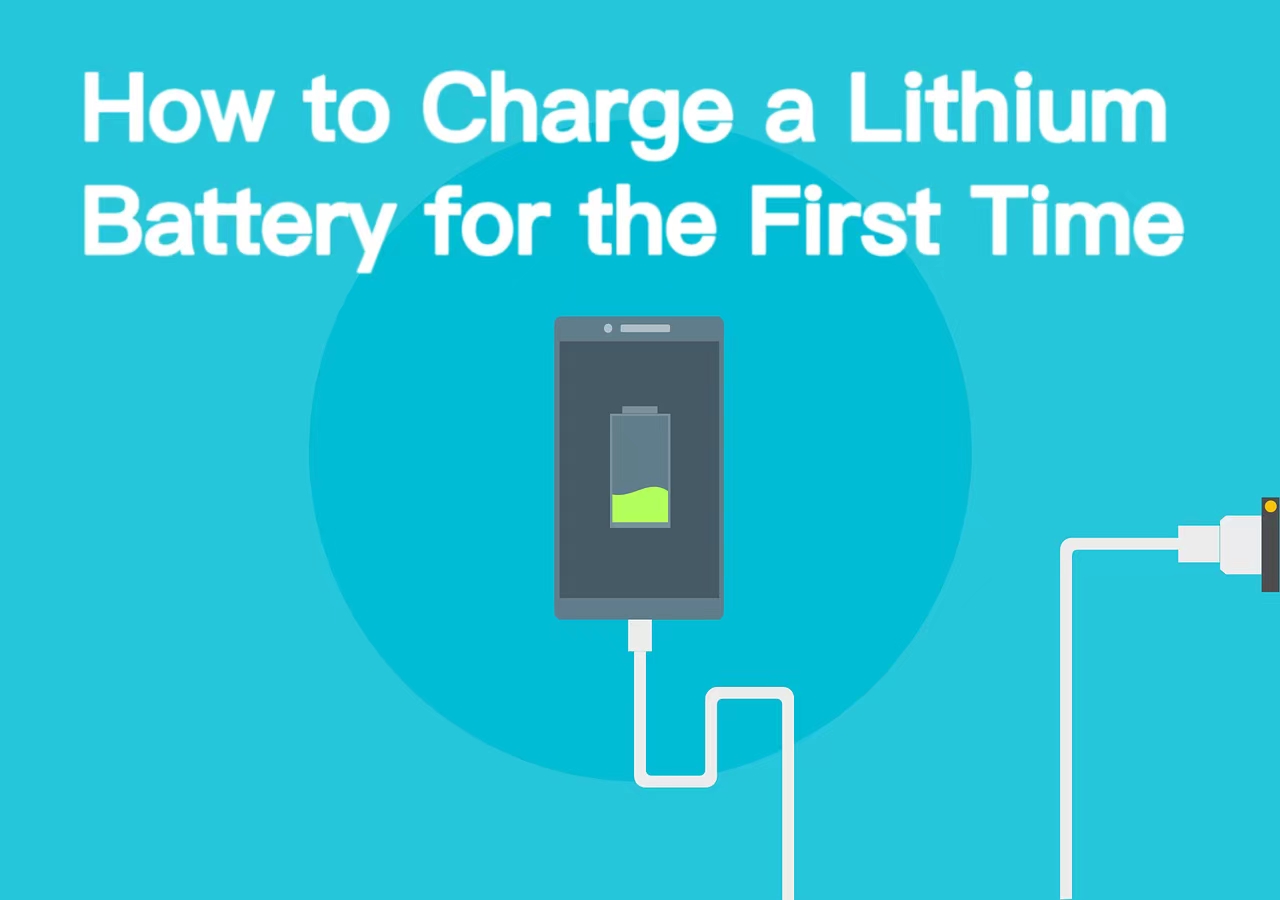
最適な リチウム電池の初めての充電 初期充電レベルと使用する充電器の種類には細心の注意が必要です。リチウム電池は、永久的な損傷を引き起こす可能性があるため、最初の充電前に完全に放電してはならないことに注意してください。代わりに、容量が約 40-50% に達したときに充電することをお勧めします。これにより、バッテリーのセルのバランスが保たれ、過充電が防止されます。
いつ リチウム電池の充電器の選択バッテリーの仕様に合ったものを選ぶことが重要です。不適切な充電器を使用すると、損傷や爆発につながる可能性があります。充電速度を考慮することも重要です。充電速度は 1C (完全に充電されたバッテリーに必要な電流) を超えてはなりません。充電が速すぎると過熱し、バッテリーの寿命が短くなる可能性があります。
リチウム バッテリーの適切なケアとメンテナンスを確実に行うには、安全な保管方法に従い、定期的に放電することも重要です。完全に充電された、または完全に放電されたリチウム バッテリーを長期間保管すると、パフォーマンスが低下したり、故障したりする可能性があります。数か月ごとにバッテリーを放電すると、バッテリーの容量を維持するのに役立ちますが、再充電する前に容量が 20% を下回らないように注意してください。充電、保管、放電、および安全上の注意事項に関するこれらのガイドラインに従うことで、貴重なリチウム バッテリーの寿命とパフォーマンスを最大限に高めることができます。
| 充電の注意点 | 充電の禁止事項 |
|---|---|
| 正しい充電器を使用する | 互換性のない充電器を使用する |
| 適度な料金で請求する | 適度な料金で請求する |
| 適切な電圧で充電する | 適度な料金で請求する |
表: リチウム電池の充電時の注意事項
リチウムイオン電池が充電されない
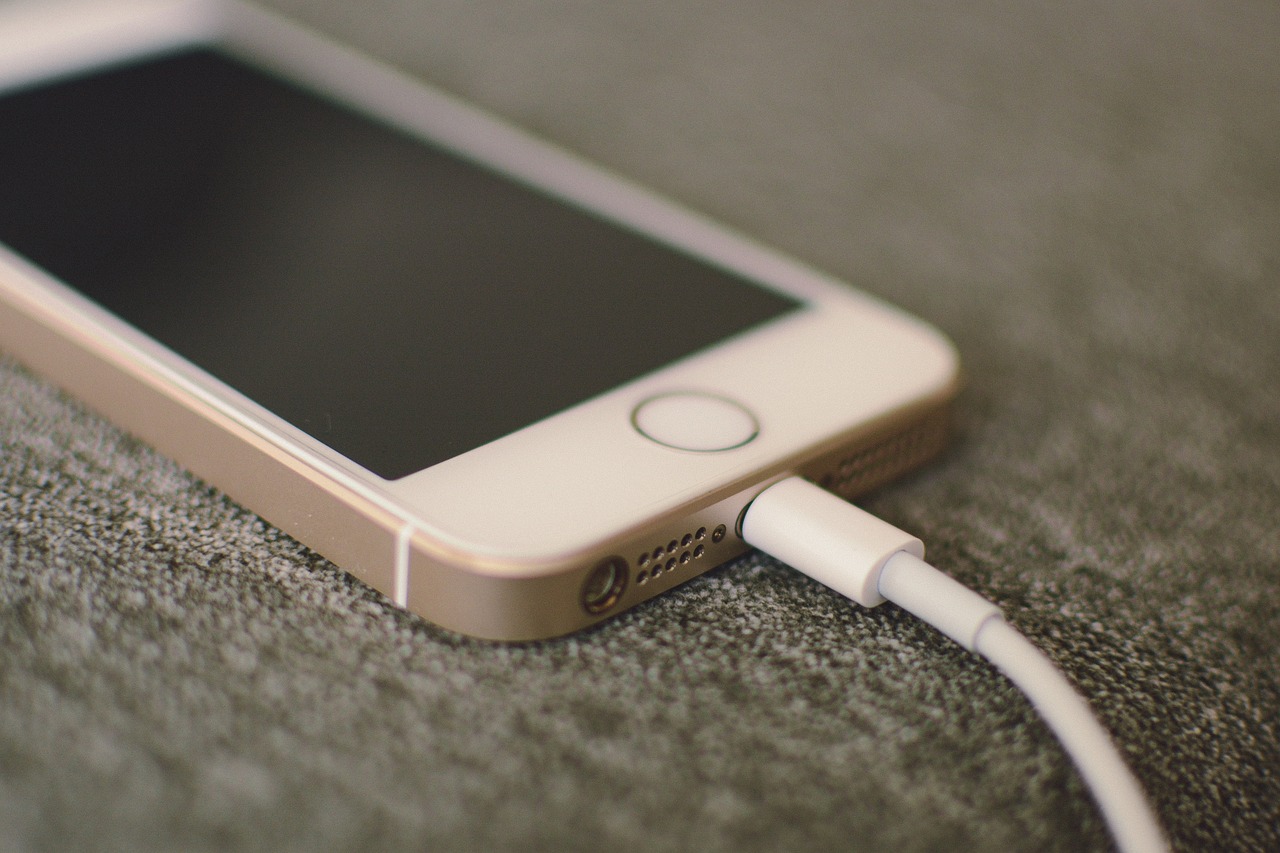
リチウムイオン電池のユーザーが直面する最も苛立たしい問題の一つは、 バッテリーが充電されないこの問題が発生する理由はいくつか考えられますが、過充電、充電不足、充電器の故障などです。これらの問題のトラブルシューティングは難しい場合がありますが、適切な注意とメンテナンスを行うことで、発生を防ぐことができます。
リチウム バッテリーが適切に充電されるようにするには、リチウム バッテリーの適切な取り扱い方法に従うことが不可欠です。これには、直射日光や熱源から離れた涼しく乾燥した場所にバッテリーを保管することが含まれます。また、バッテリーの種類に合わせて特別に設計された充電器のみを使用し、バッテリーを長時間充電することは過熱につながる可能性があるため避けてください。
リチウムイオン電池の充電に問題がある場合は、専門家に助けを求める前に実行できるトラブルシューティング手順がいくつかあります。これには、充電器とデバイスの接続をチェックし、充電器が正しく動作していることを確認することが含まれます。これらの手順のいずれも機能しない場合は、根本的な問題を診断できる経験豊富な技術者に支援を求めることが重要です。
充電の問題を防ぐには、リチウムイオン バッテリーを適切に管理することが重要です。バッテリーを正しく保管して充電し、バッテリーと充電器の両方を定期的にメンテナンス チェックすることで、常に安全を確保しながらバッテリーの寿命を延ばすことができます。電気機器を取り扱うときは、常に安全を最優先にしてください。
運転中にRVバッテリーが充電されない
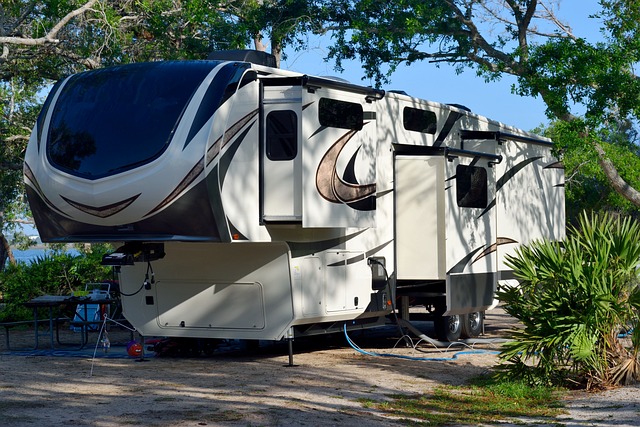
とき 運転中にRVバッテリーが充電されない原因としては、オルタネーターの出力不足、配線接続の不具合、バッテリーアイソレーターの故障など、さまざまな要因が考えられます。考えられる原因の 1 つは、オルタネーターがバッテリーを完全に充電するのに十分な電圧を生成していないことです。この問題は、オルタネーターの出力をアップグレードするか、入力電圧をブーストできる多段充電器を使用することで解決できます。
RV バッテリーの充電に影響を与えるもう 1 つの要因は、配線接続の不具合です。すべての配線と端子を定期的に検査し、確実に接続され、腐食がないことを確認することが重要です。損傷や摩耗の兆候がある場合は、さらなる問題を防ぐためにすぐに対処する必要があります。
最後に、バッテリー アイソレータの故障により、RV バッテリーが運転中に充電されないこともあります。これをテストする良い方法は、マルチメータを使用してアイソレータの入力端子と出力端子間の導通を確認することです。導通がない場合は、アイソレータの交換が必要になる場合があります。
運転中に RV バッテリーが故障する可能性のあるこれらの原因に対処することで、長距離旅行でも車両の電源の信頼性と効率性を維持できます。
「飢えた」リチウム電池を活性化する方法は?
「飢餓」を活性化する リチウム電池は難しい セルの損傷を避けるために、慎重に充電のバランスをとる必要があるため、これは非常に難しい作業です。長期間使用しなかったり、過放電したりして電圧が推奨しきい値を下回った場合、バッテリーが「飢餓」状態になります。この状態は永久的な損傷を引き起こし、バッテリーの容量、寿命、効率を低下させる可能性があります。したがって、「飢餓」状態を回復させるには、正しい手順に従うことが不可欠です。 リチウム電池.
最初のステップ '飢えた'リチウム電池を活性化する リチウムイオン化学をサポートし、バランス調整機能を備えた適切な充電器に接続することです。充電器には、定電流、定電圧、トリクル充電などの複数の充電モードがあり、セルに過負荷や過熱を与えることなく適切に充電できます。適切な充電器には、過電流保護、短絡保護、逆極性保護などの安全機能も備わっている必要があります。
充電不足のリチウム バッテリーを適切な充電器に接続したら、マルチメーターまたは電圧計を使用して定期的に電圧値をチェックして進行状況を監視してください。すべてのセルが最適な電圧レベルに達し、バランスが取れるまで、充電プロセスを切断したり中断したりしないでください。このプロセスが正常に完了したら、リチウム バッテリーを直射日光の当たらない涼しく乾燥した場所に保管し、長期間使用していない場合でも定期的に充電するなど、定期的なメンテナンス チェックを行うことをお勧めします。
| 充電モード | 安全機能 |
|---|---|
| 定電流 | 過電流保護 |
| 定電圧 | 短絡保護 |
| トリクル充電 | 逆極性保護 |
バッテリーが枯渇したリチウム バッテリーを復活させるには、最大限の結果を得るために、忍耐、注意、特定のガイドラインの順守が必要です。マルチメーターまたは電圧計を使用して定期的に電圧をチェックし、進行状況を監視しながら、複数の充電モードと安全機能を備えた適切な充電器を使用してください。これらの手順に従うことで、バッテリーの安全性と信頼性を確保しながら、より長い期間、最高のパフォーマンス レベルを維持することができます。
リチウム電池の過充電に対処するには?
前のサブトピックでは、「電力不足」のリチウム バッテリーを活性化する方法について説明しました。次に、リチウム バッテリーのメンテナンスのもう 1 つの重要な側面である過充電への対処について説明します。過充電はバッテリーの健全性と寿命に悪影響を与える可能性があるため、それを防ぐ方法を理解することが重要です。
まず、最近のリチウム バッテリーのほとんどには過充電保護回路が装備されていることに注意してください。ただし、この機能のない古いモデルや安価なモデルを使用している場合は、バッテリーの充電レベルを注意深く監視し、長時間プラグに差し込んだままにしないことが不可欠です。過充電はバッテリー セル内に熱を蓄積させ、損傷や火災につながる可能性があります。
次に、リチウム バッテリーを誤って過充電してしまった場合、潜在的な損傷を軽減するための手順があります。すぐにデバイスから充電器を外し、可能であればバッテリーをコンパートメントから取り出します。さらに操作を行う前に、バッテリーが冷えるまでしばらく (少なくとも 1 時間) 待ちます。バッテリー パックに膨張や変形の兆候が見られた場合は、安全に処分して新しいものと交換してください。
理解 リチウム電池の過充電に対処する方法 パフォーマンスと安全性を維持するためには、充電が不可欠です。デバイスの充電プロセスを常に監視し、誤って過充電した場合には必要な予防措置を講じてください。リチウムイオン電池を扱うときは、予防が重要であることを忘れないでください。
リチウムイオン電池が劣化する原因は何ですか?
リチウムイオン電池は時間の経過とともに劣化しやすく、性能と寿命に影響を及ぼします。このプロセスには、充電サイクル数、保管または動作温度、充電特性、放電特性など、いくつかの要因が影響します。
これらの重要なポイントを理解することで、バッテリーを最適な状態に保ち、リチウムイオン バッテリーの寿命を延ばすことができます。各要因を詳細に調査することで、リチウムイオン バッテリーが劣化する原因を包括的に理解できます。
時間
リチウム電池の最適な使用とメンテナンスを決定するには、時系列が重要な役割を果たします。使用していない場合でも、日が経つにつれてリチウムイオン電池の充電容量は徐々に低下します。これは、電池内部で起こる化学反応により、時間の経過とともに部品が摩耗するためです。
つまり、サイクルが完了するにつれて、バッテリーの全体的な状態は悪化します。ただし、すべてのリチウムイオン バッテリーが同じ速度で劣化するわけではないことに留意することが重要です。保管温度、充電習慣、放電率などの要因はすべて、時間の経過とともにバッテリーが劣化する速度に影響する可能性があります。
たとえば、バッテリーを高温にさらすと、内部コンポーネントに熱ストレスが生じ、劣化が早まる可能性があります。一方、バッテリーを低温で保管すると、劣化が遅くなりますが、内部抵抗の増加や起動時の容量低下などの他の問題も発生する可能性があります。
したがって、長期にわたって最適なパフォーマンスを得るためにリチウムイオン電池を最適に維持および使用する方法を決定する際には、これらの要素を考慮することが重要です。
充電サイクル
リチウムイオン電池の充電サイクル中、電子は正極から負極へ流れ、イオンは反対方向に移動します。この動きは、電気化学反応を起こすためのエネルギーを供給する外部電圧源によって促進されます。充電プロセスには、定電流と定電圧の 2 つの段階があります。
最初の段階は定電流充電と呼ばれ、バッテリーの電圧が所定の制限に達するまで、一定量の電流がバッテリーに流れ込みます。この時点で、充電器は定電圧モードに切り替わり、充電電流を減らしながら安定した電圧レベルを維持します。完全に充電されると、余分なエネルギーは熱として放出されます。過充電はリチウムイオン バッテリーを損傷し、全体的な寿命を縮める可能性があることに注意してください。
| 充電サイクル段階 | 電流(A) | 電圧 (V) | 充電時間(時間) |
|---|---|---|---|
| 定電流 | 1-2C* | 4.20 V/セル** | 1~3時間 |
| 定電圧 | <0.05C*** | 4.20 V/セル** | 完全に充電されるまで |
*C = リチウム電池の容量(アンペア時間)
**セルあたりの電圧は、特定のバッテリーの化学組成によって異なります。
***Cレートは容量に対する放電または充電率を示します
保管/動作温度
リチウムイオン電池を保管または操作する温度は、電池の性能と寿命に大きく影響します。通常、これらの電池の最適な保管温度は 20°C ~ 25°C (68°F ~ 77°F) です。この範囲であれば、自己放電率と容量の維持のバランスが保たれます。
この範囲外の温度にさらされると、バッテリーの寿命が短くなり、パフォーマンスが低下する可能性があります。
温度は保管条件に影響を与えるだけでなく、リチウムイオン電池に適した動作条件を決定する上でも重要な役割を果たします。これらの電池の理想的な動作温度は、電池の種類によって異なりますが、通常は 15°C ~ 35°C (59°F ~ 95°F) です。
この範囲外で使用すると、性能が低下し、永久的な損傷を引き起こす可能性があります。したがって、リチウムイオン電池は使用中または保管中に極端な温度にさらされないようにすることが重要です。そうしないと、電池の有効性と寿命が損なわれる可能性があります。
充電特性
リチウムイオン電池の充電特性は、これらの電源の寿命と信頼性を確保する上で考慮すべき重要な側面です。リチウムイオン電池は、容量を維持し、寿命を延ばすために正確な充電条件を必要とします。特定の電池用に設計された正しい充電器を使用することが重要です。不適切な充電器を使用すると、過充電または充電不足が発生し、どちらも電池を損傷し、全体的なパフォーマンスを低下させる可能性があります。
さらに、リチウムイオン電池を 45°C (113°F) を超える温度で充電することは避けてください。電池の化学的性質に永久的な損傷を与える可能性があります。また、0°C (32°F) 未満の極端に低い温度での充電も避けてください。低温では電池セル内の化学反応が遅くなり、充電の受け入れ能力が低下します。
したがって、リチウムイオン電池を 20 ~ 80% の容量で充電し、充電プロセス中に極端な温度条件を避けることが最善です。これらのガイドラインに従うことで、リチウムイオン電池が長期間にわたって最適なパフォーマンスを発揮することを保証できます。
放電特性
リチウムイオン電池の性能を最適化する バッテリーは放電を理解する必要がある 特性。温度、負荷電流、充電状態など、いくつかの要因が放電率に影響します。バッテリーの電力供給能力は電圧レベルと充電状態に依存し、電圧が高いほど放電率は速くなります。
温度も、バッテリーの放電率を決定する上で重要な役割を果たします。温度が高いと、バッテリー内の化学反応の速度が上がり、消耗が早くなります。さらに、負荷電流が大きいと、システム内で電圧降下が発生し、全体的な効率が低下し、時間の経過とともにバッテリーが損傷する可能性があります。これらの要因を注意深く監視し、それに応じて使用パターンを調整することで、ユーザーはリチウムイオン バッテリーの寿命を最大限に延ばし、より長い期間にわたって最適なパフォーマンスを維持できます。
| 要素 | 放電特性への影響 |
|---|---|
| 温度 | 反応速度が上昇し、消耗が速まる |
| 負荷電流 | 電圧降下を引き起こし、効率を低下させる |
| 充電状態 | 電圧が高いほど放電が速くなる |
| 保管期間 | 保管期間が長い = 容量が少ない |
充電深度
リチウムイオン電池の充電深度を理解することは、電池の寿命を延ばし、最適なパフォーマンスを維持するために重要です。充電深度とは、各充電サイクル中に使用される電池の総容量の割合を指します。
リチウムイオン電池は、全体の容量が著しく低下し始めるまでの充電サイクルの回数が限られており、通常は約 500 回です。したがって、電池の寿命を最大限に延ばすには、電池が過充電されたり完全に放電されたりしないようにすることが重要です。
過充電はバッテリーに回復不可能な損傷を与え、総容量を減少させる可能性があります。バッテリーが総容量の 80 ~ 90% に達したら充電を停止し、フル充電状態で長時間プラグを差し込んだままにしないことを推奨します。
一方、バッテリーを完全に放電すると、容量が失われ、全体的なパフォーマンスが低下する可能性があるため、有害となる可能性もあります。これを防ぐには、バッテリーの残量が 20 ~ 30% に達したときに再充電するのがベストプラクティスです。
充電深度を理解して管理することで、リチウムイオン電池は長期間にわたって最適なパフォーマンスと寿命を維持できます。
放電の深さ
リチウムイオン電池の寿命を最大限に延ばすには、慎重な監視と戦略的な再充電によって放電深度を効果的に管理する必要があります。放電深度とは、再充電前に電池からどれだけのエネルギーが消費されるかを指します。リチウムイオン電池は充電回数が限られているため、 放電の深さ 寿命を延ばすのに役立ちます。
放電深度を管理する 1 つの方法は、再充電する前にバッテリーを完全に放電させないようにすることです。代わりに、可能な限りバッテリー レベルを 20% から 80% の間に保つようにしてください。これにより、バッテリーへの不要な負担が防止され、コンポーネントの摩耗が軽減されます。
さらに、リチウムイオン電池を長期間低充電状態で放置すると、回復不可能な損傷を引き起こす可能性があるため、あまり使用していなくても定期的に充電することが重要です。
リチウムイオン電池をどの程度放電しているかを意識し、充電レベルを維持するための措置を講じることで、電池をできるだけ長持ちさせることができます。
満席に近い/空いている時間
リチウムイオン電池が満充電に近い状態または空の状態にある時間は、電池の全体的な寿命に大きな影響を与える可能性があります。満充電に近い状態または空の状態にあるときにリチウムイオン電池の健全性を維持するには、次の要素を考慮する必要があります。
- 過充電やバッテリーの損傷につながる可能性があるため、バッテリーを長時間 100% 充電状態に維持しないでください。
- 同様に、バッテリーを完全に放電しないでください。バッテリー内のセルに回復不可能な損傷を与える可能性があります。
- 可能であれば、バッテリーを 20 ~ 80% の間で充電しておくようにしてください。これが長期的な健全性にとって最適であると考えられています。
- 充電する際は、リチウムイオン電池専用の充電器を使用し、必要がない限り急速充電は避けてください。
- バッテリーを極端な温度(高温または低温)にさらさないように注意してください。これもバッテリーの寿命に悪影響を与える可能性があります。
これらのガイドラインに従い、ほぼ満充電または空になったときにリチウムイオン電池をどのように使用し、充電するかに注意することで、電池の全体的な寿命を延ばし、パフォーマンスを最大限に高めることができます。ユーザー側で多少の余分な労力が必要になるかもしれませんが、適切なメンテナンスを行うことで、最終的には交換費用を節約し、デバイスがスムーズに動作し続けることを保証します。
リチウムイオン電池の容量をテストするには?
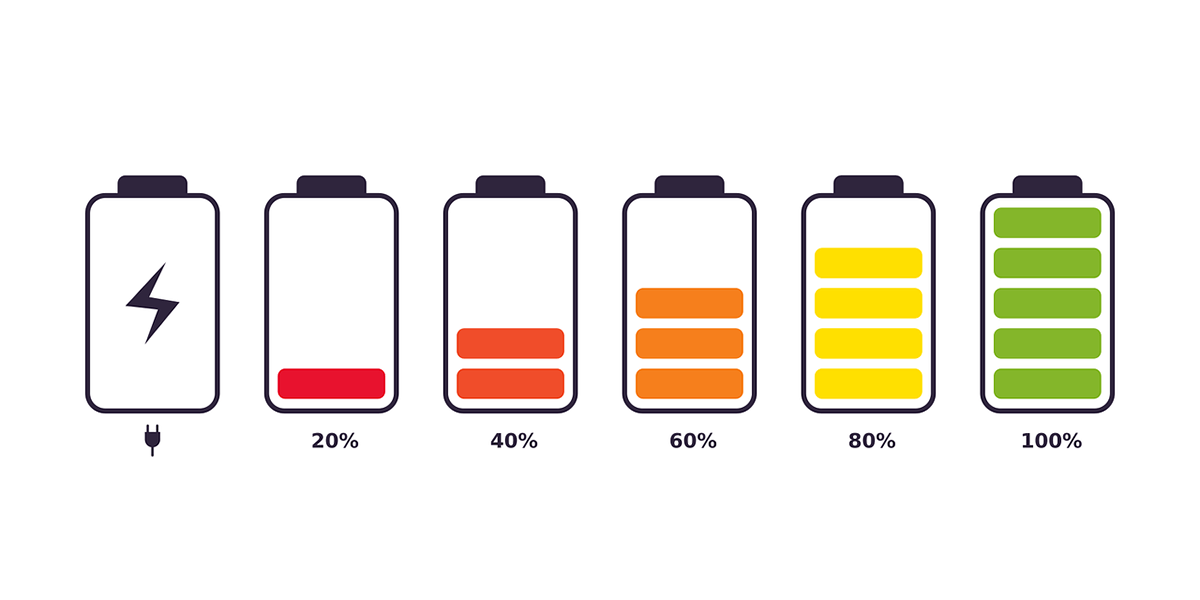
正確に リチウムイオン電池の容量を測定するマルチメーターまたは専用のバッテリー テスターを使用することをお勧めします。これらのツールを使用すると、バッテリーの状態を判断するために使用できる正確な測定値が得られます。
これらのテストを実施するときは、すべての測定値が室温で一定の放電率で取得されていることを確認することが重要です。
リチウムイオン電池をテストする一般的な方法の 1 つは、特定の電圧しきい値 (通常はセルあたり約 3.0 ボルト) に達するまで電池を放電することです。これにより、電池に残っているエネルギー量を判断し、再充電が必要になるまでのデバイスの寿命がどれくらい残っているかを知ることができます。
容量をテストする別の方法はクーロンカウントです。これは、時間の経過とともにバッテリーに出入りする電流の量を測定するものです。この方法ではより高度な機器が必要ですが、他のテスト方法よりもさらに正確な結果を提供できます。
全体的に、リチウムイオン電池を定期的にテストすることは、電池の状態を維持し、長期間にわたって最適なパフォーマンスを発揮するために重要です。適切なテスト手順に従い、高品質の機器を使用することで、電池の容量を正確に把握し、充電または交換が必要な時期について十分な情報に基づいた判断を下すことができます。
リチウムイオン電池は液漏れしますか?
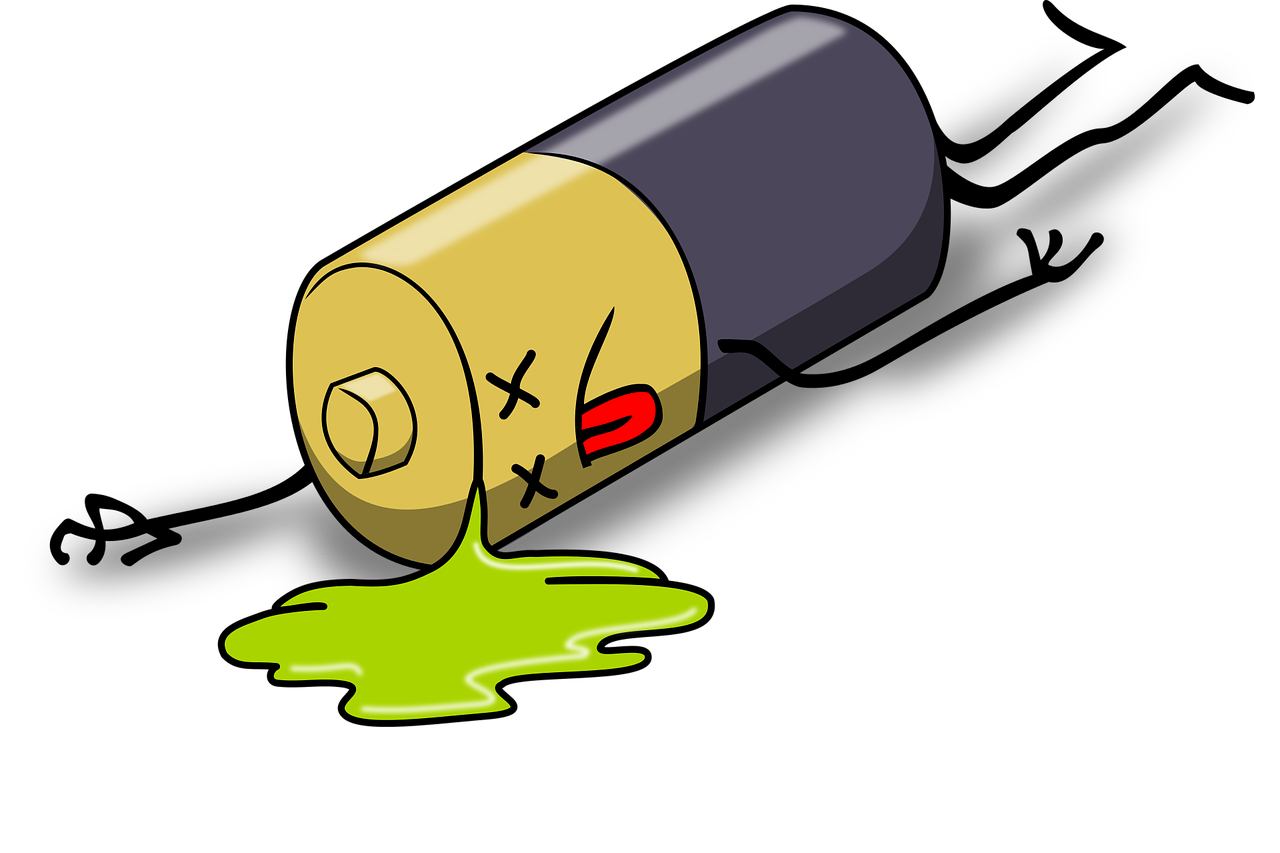
リチウムイオン電池は、一般的に安全で信頼性が高いと考えられていますが、特定の条件下では液漏れする可能性があります。これは、リチウムイオン電池には、時間の経過とともに金属やプラスチック部品を腐食させる可能性のある、反応性の高い化学物質が含まれているためです。さらに、極端な温度や物理的損傷にさらされると、電池ケースが割れたり破裂したりして、電解液が漏れることがあります。
に リチウムイオン電池の液漏れを防ぐ、いくつかの基本的なガイドラインに従うことが重要です。
- 直射日光や熱源を避け、涼しく乾燥した場所に保管してください。
- 落としたり、衝撃や圧力にさらしたりしないでください。
- 特定のデバイス用に設計された互換性のある充電器とケーブルのみを使用してください。
- 膨らみや変色などの損傷の兆候がないか、定期的にバッテリーを点検してください。
リチウムイオン電池が漏れた場合は、直ちに電池をデバイスから取り外し、地域の規制に従って適切に廃棄する措置を講じることが重要です。漏れた電解液に触れると、適切に処理しないと皮膚の炎症やその他の健康への影響を引き起こす可能性があります。
適切な保管と使用に関するこれらのガイドラインに従うことで、リチウムイオン電池が寿命を通じて安全で信頼できる状態を保つことができます。
リチウム電池の故障の原因と対処法
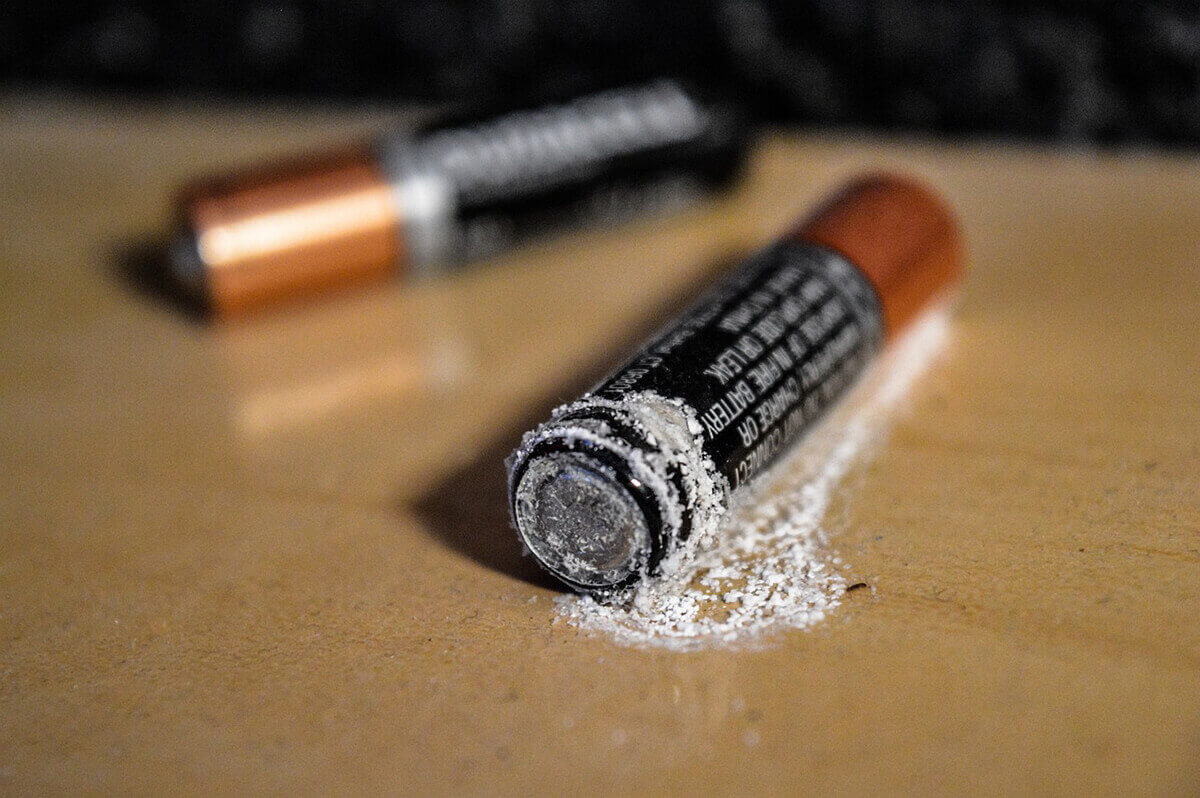
1つの可能性 リチウム電池の故障の原因 時間の経過による電極材料の劣化により、容量と性能が低下する可能性があります。リチウムイオン電池は、エネルギー密度が高く、劣化が顕著になるまでの充放電サイクル数が限られているため、この問題に特に敏感です。さらに、極端な温度、機械的ストレス、過充電にさらされることも、電池の早期故障につながる可能性があります。
リチウム バッテリーの故障を防ぐには、適切な保管と使用方法を守る必要があります。使用していないときは、バッテリーを室温で保管し、熱源や湿気から遠ざけてください。極端な温度にさらしたり、充電レベルが低い状態で長期間保管したりしないでください。リチウムイオン バッテリーを使用する場合は、フル容量に達したら充電器から取り外して過充電を防いでください。
リチウム電池が故障した場合、問題の性質に応じていくつかの処置方法があります。たとえば、充電中または使用中に電池が膨張したり過熱したりした場合は、直ちにデバイスや充電器から取り外し、冷却してから適切に廃棄する必要があります。場合によっては、専用の機器で再調整するか、深放電サイクルを実行することで、死んだ電池を復活させることができる場合があります。ただし、適切な知識なしにこれらの処置を試みると、電池がさらに損傷したり、人身事故につながる可能性があります。
| リチウム電池の故障の原因 | 治療方法 |
|---|---|
| 電極材料の劣化 | 適切な保管と使用方法 |
| 極端な温度と機械的ストレスへの暴露 | 過熱/膨張した場合はデバイス/充電器から取り外してください |
| 過充電 | 適切に処分してください。可能であれば、専用の機器を使用して再生してください。 |
壊れたリチウム電池を復活させる
死者を蘇らせる リチウム電池 特殊な機器と根本的な問題に関する知識を必要とする難しい作業です。ただし、バッテリーの復活を試みる前に、マルチメーターを使用して電圧レベルをチェックし、バッテリーが本当に死んでいないことを確認してください。読み取り値が 2 ボルト未満の場合は、復活が必要になる可能性があります。
に 死んだリチウム電池を復活させる、 次の手順を実行します:
- バッテリーをゆっくり充電します。低電流出力(約 0.1C)の適切な充電器にバッテリーを数時間接続し、電圧が約 3 ボルトに達するまで充電します。
- バッテリーを活性化します - 小さな充電パルス(高電流の短いバースト)を適用するか、専用の活性化デバイスを使用してセル内の化学反応を開始します。
- 通常どおりに充電します - 有効にしたら、フル容量が回復するまで通常の充電速度でバッテリーを充電します。
リチウム電池の復活には、過充電や起動時の過電流による過熱による爆発や発火などのリスクが伴うことに注意することが重要です。したがって、これらの手順を安全に実行できる自信がない場合は、専門家に助けを求めるか、使用済みの電池を適切に処分してください。
飛行機内のリチウム電池パック
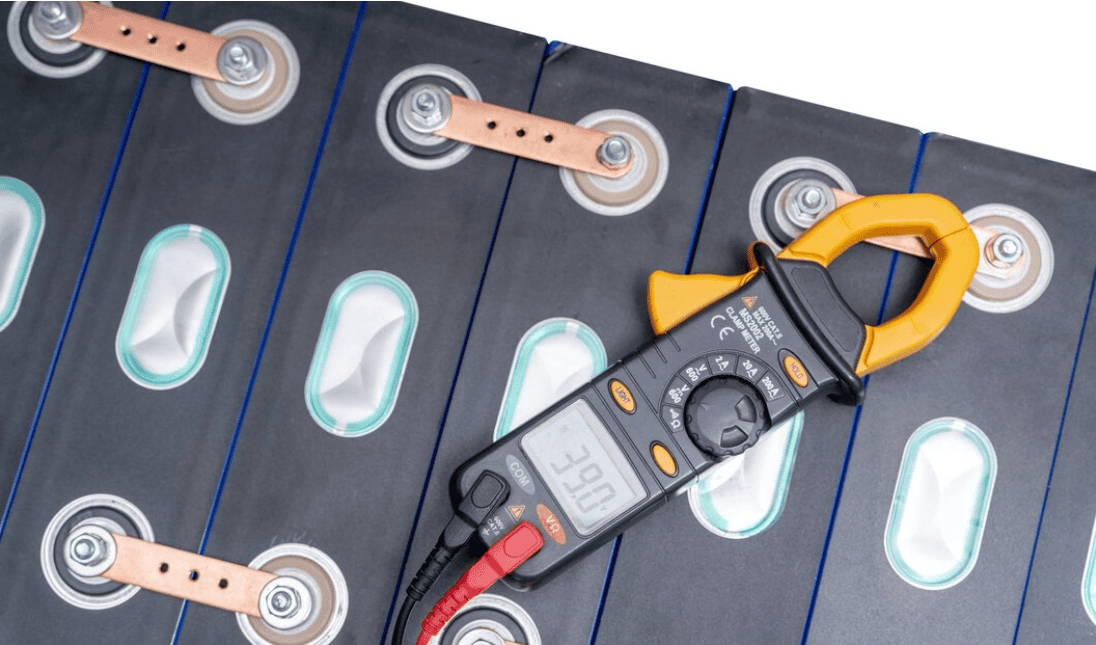
リチウム電池パックを搭載した電子機器を飛行機で輸送する場合、潜在的な危険を防ぐために、厳格な安全規制とガイドラインを遵守することが重要です。 リチウム電池はエネルギー密度が高く、効率的な電力供給が可能 リチウム電池は携帯電子機器の電力源として広く使用されていますが、適切に取り扱わないと火災や爆発の危険もあります。国際航空運送協会(IATA)は、リチウム電池の安全な輸送を確保するために航空会社と乗客が従わなければならないガイドラインを制定しています。
リチウム電池を飛行機で輸送する際の重要な要件の 1 つは、受託手荷物ではなく機内持ち込み手荷物に詰めることです。この規則は、バッテリーがばらばらになっている場合も取り付けられている場合も、予備または外付けのバッテリー パックにも適用されます。この規則の理由は、バッテリーの故障や損傷が貨物室で他の可燃性物質と混ざると、すぐに危険な状況に発展する可能性があるためです。さらに、バッテリー端子を絶縁テープで覆うか、各バッテリーを個別のビニール袋に入れることで、ショートから保護する必要があります。
次の表は、リチウム電池を飛行機で輸送する場合の追加ガイドラインをまとめたものです。
| バッテリーの種類 | 機内持ち込み手荷物として許可されますか? | 受託手荷物として持ち込めますか? |
|---|---|---|
| 予備バッテリー | はい | いいえ |
| インストール済み | はい | いいえ |
| 外部パック | はい | いいえ |
これらの規則とガイドラインに従うことで、ご自身や周囲の人々の安全を損なうことなく、電子機器やリチウム電池を安全に持ち運ぶことができます。航空会社はリチウム電池に関して独自のポリシーを持っている場合があるので、旅行前に必ず航空会社に確認してください。
電気自動車用リチウム電池のメンテナンス

電気自動車の最適な性能と寿命を確保するには、適切なケアと注意を払う必要があります。 リチウム電池システムリチウム電池の寿命は、使用パターン、充電習慣、温度条件などの要因によって決まります。したがって、電池を良好な状態に保つには、定期的なメンテナンスが不可欠です。
電気自動車用リチウム バッテリーをメンテナンスする最初のステップは、メーカーの充電および放電の指示に従うことです。過充電または充電不足はバッテリー セルを損傷し、時間の経過とともに容量が低下する可能性があります。
また、高温や低温によりセルに回復不可能な損傷が発生する可能性があるため、バッテリーを極端な温度にさらさないようにすることも重要です。
リチウム電池のメンテナンスのもう一つの重要な側面は、充電状態(SOC)を定期的に監視することです。SOCとは、ある時点で電池に残っているエネルギーの量を指します。20%から80%の間の健全なSOC範囲を維持すると、寿命が長くなります。 リチウム電池の寿命 細胞へのストレスを軽減することによって。
さらに、セルに永久的な損傷が生じる可能性があるため、EV をフル充電または放電したバッテリーで長期間放置しないことをお勧めします。
電気自動車のリチウム バッテリー パックを適切に管理するには、充電と放電の実施に関するメーカーのガイドラインに厳密に従い、SOC レベルを定期的に監視する必要があります。温度範囲で最適な状態を維持することで、セルがより長く健全な状態を保つことができます。
適切なメンテナンスを行えば、摩耗した部品の交換コストを抑えながら、EVの性能を向上させることができます。 電池 私たちが毎日運転する自動車に搭載されているこれらの重要な部品に継続的な注意と配慮を払わなければ不可能だったEVの耐用年数を延ばすことで、環境保護活動に貢献しながら、早期にEVを寿命まで延ばすことができます。
スマートフォンとノートパソコンのリチウム電池のメンテナンス

スマートフォンやノートパソコンなどのポータブル電子機器の寿命と最適なパフォーマンスを確保するための重要な要素の 1 つは、デバイスの電源管理設定に定期的に注意を払うことです。これは、デバイスのリチウムイオン バッテリーの全体的な寿命に大きな影響を与える可能性があります。リチウムイオン バッテリーは、過充電、過熱、過度の放電サイクルに敏感です。したがって、寿命を縮める可能性のある損傷を防ぐために、充電サイクルを管理することが重要です。
ポータブル電子機器のバッテリー寿命を健全に維持するには、次のメンテナンスのヒントを実装することを検討してください。
- デバイスを一晩充電したり、充電が 100% に達した後は接続したままにしたりしないでください。
- 過度の熱や低温にさらされるとバッテリーの性能が低下する可能性があるため、充電中はデバイスを室温に保ってください。
- サードパーティ製の充電器では、デバイスに必要な適切な電圧および電流レベルが提供されない可能性があるため、デバイスに付属の元の充電器を使用してください。
さらに、スマートフォンやラップトップで、高いエネルギー消費を必要とする機能を長時間使用することは避けてください。これには、最大レベルに設定された画面の明るさ、Wi-Fi ホットスポット テザリング、複数のアプリの同時実行などが含まれます。
このような機能を効果的に管理し、上記の簡単な手順に従うことで、リチウムイオン バッテリーの寿命を今後何年にもわたって延ばすことができます。
適切な電源管理設定を定期的に維持することが、スマートフォンやラップトップのリチウムイオン電池の寿命を延ばす鍵となります。過充電サイクルを回避し、充電セッション中にデバイスを適度な温度に保ちながら、デバイスの高エネルギー消費機能の使用を制限することは、デバイスの機能の最適化に役立ちます。さらに、純正の充電器のみを使用することで、充電セッション中に適切な電圧レベルが確実に提供されます。この知識を実践することで、今後何年にもわたってバッテリー寿命が延長され、ユーザーは頻繁な交換や修理を心配することなく楽しい体験ができるようになります。
リチウム電池の使用に関するベストプラクティス

ポータブル電子機器の性能を最適化し、リチウムイオン電池の寿命を延ばすには、電力消費を最小限に抑え、過充電や過熱による損傷を防ぐ効果的な技術を導入する必要があります。そのようなテクニックの 1 つは、バッテリーの寿命を損なう可能性のある極端な充電レベルを避けるために、バッテリーを 20% と 80% の容量の間で充電することです。
さらに、高温、直射日光、または長時間の充電を避けることは、爆発につながる可能性のある熱暴走を防ぐのに役立ちます。
リチウムイオン電池の使用を最適化するもう 1 つの重要な要素は、使用されていないアプリケーションや機能を使用していないときにオフにして、エネルギー使用量を最小限に抑えることです。画面の明るさを下げること、Wi-Fi と Bluetooth 接続を無効にすること、必要な場合にのみバックグラウンド同期を使用することはすべて、電力消費を削減する効果的な方法です。
また、急速充電オプションは通常の充電方法よりも多くの熱を発生する可能性があり、デバイスのバッテリーの寿命が短くなる可能性があるため、使用を避けることをお勧めします。
リチウムイオン電池の寿命を延ばすには、リチウムイオン電池の適切な保管方法を維持することが不可欠です。約 60% の容量で涼しく乾燥した場所に保管すると、必要なときにすぐに電源を投入できる十分な充電を維持しながら、化学的劣化を軽減できます。
古いリチウムイオン電池や破損したリチウムイオン電池を地域の規制に従って適切に処分することは、電池の化学反応に含まれる有害物質から環境を保護することにも役立ち、耐用年数が終了した後に安全に処分できるようになります。
リチウム電池の取り扱い: 安全に関するヒント
リチウム電池の安全な取り扱いを確保することは、その使用に伴う潜在的な危険やリスクを回避するために非常に重要です。リチウム電池は反応性が高く、取り扱いを誤ると火災や爆発を引き起こす可能性があります。
リチウム電池を取り扱う際に留意すべき安全上のヒントをいくつか紹介します。
- バッテリーを熱源から遠ざける: リチウムイオンバッテリーは高温にさらされると爆発する可能性があるため、直射日光やその他の熱源から遠ざけて保管することが重要です。
- 適切な保護具を使用してください: リチウム電池を扱うときは、化学物質への曝露や火傷の可能性を避けるために、常に手袋と保護眼鏡を着用してください。
- 過充電を避ける: 過充電 リチウム電池は鉛を引き起こす可能性があります 過熱すると、バッテリー温度が制御不能に上昇し、爆発または発火するプロセスである熱暴走が発生する可能性があります。
- バッテリーに穴を開けたり損傷を与えたりしないでください。損傷したリチウムバッテリーは、爆発を引き起こす可能性のある可燃性化学物質を放出する可能性があり危険です。したがって、常に注意深く取り扱い、いかなる形でも損傷しないようにしてください。
- 使用済みバッテリーの適切な処分: 使用済みリチウムバッテリーには危険な物質が含まれているため、適切に処分することが重要です。最適なリサイクル方法については、地元のリサイクル センターにお問い合わせください。
これらの安全に関するヒントに従うことで、リチウム電池を安全に取り扱い、事故が発生するリスクを軽減できます。これらのバッテリーには多くの利点がありますが、正しく扱わないと重大なリスクも引き起こすことを常に覚えておいてください。
リチウム電池のリサイクル: なぜ重要なのか
リチウム電池のリサイクルは、環境や公衆衛生に対する有害物質の悪影響を軽減するための重要な一歩です。リチウム電池は、さまざまな電子機器、電気自動車、再生可能エネルギーシステムに広く使用されています。しかし、その寿命が尽きると、コバルト酸リチウムやニッケルカドミウムなどの有毒化学物質が漏洩する可能性があるため、環境に重大な脅威をもたらす可能性があります。
リサイクル リチウム電池の製造工程 これには、コバルト、ニッケル、リチウムなどの有価金属を抽出して再利用すると同時に、有害な物質を安全に廃棄することが含まれます。これらのバッテリーをリサイクルすることで、土壌や水路を汚染したり火災を引き起こしたりする可能性のある埋め立て地に行き着くことを防ぐことができます。さらに、リサイクルされた材料を使用して新しい製品を製造することができるため、原材料の採掘の必要性が減り、天然資源が節約されます。
より多くの人が責任を持ってリチウム電池をリサイクルすることを奨励するには、その利点についての意識を高めることが重要です。以下の表は、リチウム電池のリサイクルが環境にどのようなプラスの影響を与えるかについての興味深い事実を示しています。
| リサイクルの事実 | 利点 |
|---|---|
| リサイクルされたリチウムイオン電池材料 1 トンは、採掘された鉱石 1 ~ 2 トンに相当します。 | 天然資源を節約します |
| 100 万台のラップトップをリサイクルすると、米国の 3,000 世帯以上の年間電力に相当する十分なエネルギーが節約されます | CO2排出量の削減 |
| 携帯電話のバッテリー 1 個には十分な量の亜鉛とマンガンが含まれており、抽出すれば 1 人に 1 年間きれいな飲料水を供給できるほどです。 | きれいな水へのアクセスなどの地球規模の問題の解決に貢献 |
全体として、リチウム電池のリサイクルは有益であるだけでなく、世界的に持続可能性への取り組みを促進するために必要でもあります。電子機器を使用する個人から電子機器を製造するメーカーに至るまで、あらゆるレベルでの責任ある廃棄慣行と適切な取り扱い手順を通じて、私たちは貴重な資源を節約しながら、有害廃棄物によって引き起こされる環境へのダメージを最小限に抑えることができます。
リチウム電池の推奨ブランドと製品
リチウム電池の使用を検討する場合、市場で入手可能なさまざまなブランドや製品を認識することが重要です。リチウム電池の品質はブランドによって大きく異なり、他のものよりも寿命が長く、エネルギー密度が高いものもあります。信頼できるパフォーマンスを提供することが証明されている評判の良いブランドを選択することが重要です。
そのようなブランドの 1 つがテスラで、電気自動車や家庭用エネルギー貯蔵システムに使用される高品質のリチウム電池を生産しています。同社のバッテリーは寿命が長く、大量のエネルギーを効率的に蓄える能力で知られています。
もう 1 つの高く評価されているブランドは LG Chem で、電気自動車、モバイル機器、電動工具などで使用されるさまざまなバッテリー ソリューションを提供しています。
より手頃な価格のオプションをお探しの場合は、パフォーマンスを犠牲にすることなくコストパフォーマンスに優れたあまり知られていないブランドもいくつかあります。たとえば、中国企業 CATL は高品質のリチウム電池を手頃な価格で生産し、すぐに最大手の企業の 1 つになりました。 世界のリチウム電池サプライヤー.
結局のところ、何かを選ぶときは、 リチウム電池のブランド 最終的な決定を下す前に、価格、パフォーマンス、信頼性、耐久性などの要素を考慮することが重要です。
リチウムイオン電池に関する一般的な質問と回答
リチウムイオン電池の背後にある謎を探るのは、この革新的な技術についての深い知識と理解を必要とする興味深い仕事です。
これらのバッテリーに関するよくある質問の 1 つは、特別なメンテナンスが必要かどうかです。答えは、リチウムイオン電池はあまりメンテナンスを必要としませんが、できるだけ長く最適な状態で動作させるためにできることがいくつかあるということです。
留意すべき重要なことの 1 つは、バッテリーを高温または低温の極端な温度にさらさないことです。リチウムイオン電池は室温で最もよく機能するため、95°F を超える、または 32°F 未満の温度にさらさないようにしてください。
また、バッテリーの寿命が短くなる可能性があるため、バッテリーの過充電または過充電も避けてください。必ずデバイスに付属の充電器または推奨される代替品を使用し、バッテリーが完全に充電された後は接続したままにしないでください。
リチウムイオン電池に関するもう 1 つのよくある質問は、メモリー効果があるかどうかです。メモリー効果は、バッテリーが最新の充電レベルを記憶し、フル容量に達するのではなく、その時点までしか充電しない場合に発生します。幸いなことに、リチウムイオン電池は、一部の古いタイプの充電式電池のようなメモリー効果の影響を受けません。
ただし、完全に再充電する前に、時々完全にバッテリーを放電することをお勧めします。これにより、バッテリーの校正が維持され、長期にわたって残りの容量を正確に読み取ることができます。
もっと詳しく見る トップへ リチウム電池に関する質問!
よくある質問
リチウム電池を長期間保管する場合に注意することはありますか?
リチウム電池を長期間保管する場合は、約 50% まで充電し、涼しく乾燥した場所に保管することが重要です。劣化を引き起こし、全体的な性能が低下する可能性があるため、高温や湿気にさらさないでください。さらに、バッテリーの充電レベルを定期的に確認し、必要に応じて再充電することをお勧めします。
リチウム電池はモバイルバッテリーで充電できますか?
はい、 リチウム電池も充電可能 パワーバンクの出力がバッテリーの入力電圧と電流の仕様に一致している限り、パワーバンクを使用してください。ただし、バッテリーの損傷を避けるために、適切な充電プロトコルに従うことが重要です。
リチウム電池が耐えられる最高温度は何度ですか?
リチウム電池の最高温度は、特定の種類やメーカーによって異なります。たとえば、18650 リチウムイオン バッテリーは通常 -20°C ~ 60°C で動作し、それを超えると不可逆的な損傷を受ける可能性があります。
リチウム電池を交換する必要があるかどうかはどうすればわかりますか?
リチウム電池には寿命があり、最終的には交換が必要になります。劣化の兆候には、容量の低下、充電時間の延長、使用中の発熱の増加などがあります。定期的なメンテナンスにより、バッテリーの寿命を延ばすことができます。
リチウム電池用のサードパーティ製充電器を使用しても安全ですか?
皮肉なことに、サードパーティの充電器を使用すると、 リチウム電池 必要な安全機能が欠けていることが多いため、安全ではない可能性があります。バッテリーの最適な状態と安全性を確保するには、充電器を選択する際に技術的な精度と細部への配慮が不可欠です。
結論
結論として、リチウム電池を最適に使用するには、リチウム電池とそのメンテナンスの基本を理解することが重要です。リチウム電池の種類が異なれば用途も異なり、特定の取り扱い技術が必要になることに注意することが重要です。
これらのバッテリーの寿命を延ばすには、適切な充電習慣を維持し、適切に保管し、安全対策を遵守することが不可欠です。
比喩として、リチウム電池を貴重な宝石のように扱うことが不可欠です。慎重に取り扱い、適切に充電し、責任を持ってリサイクルしてください。これらのガイドラインに従い、推奨ブランドと製品を利用することで、ユーザーは潜在的な危険を最小限に抑えながら、リチウム電池の経験を最大限に活用することができます。
要約すると、適切な知識とベストプラクティスの遵守は、パフォーマンスを最大化するだけでなく、環境にも積極的に貢献します。
